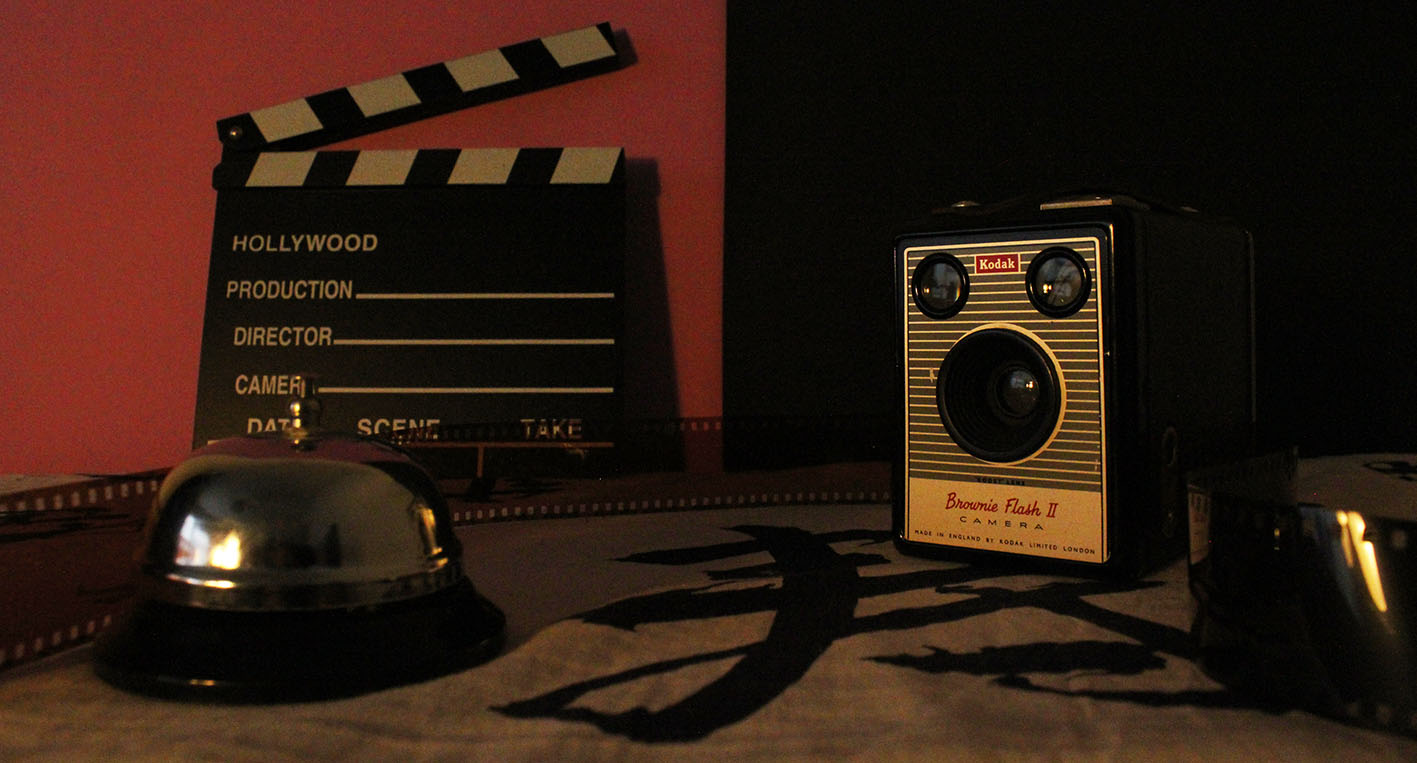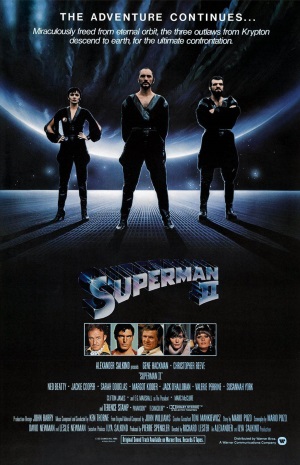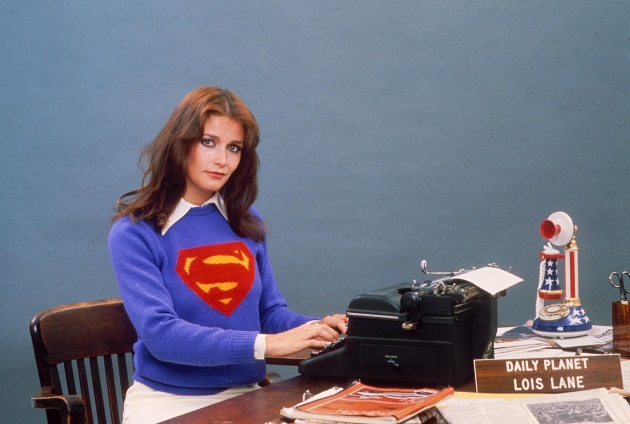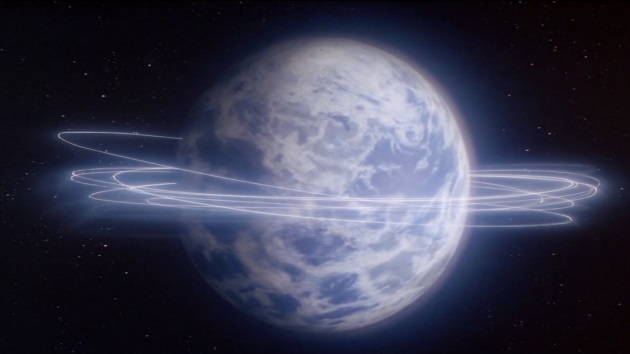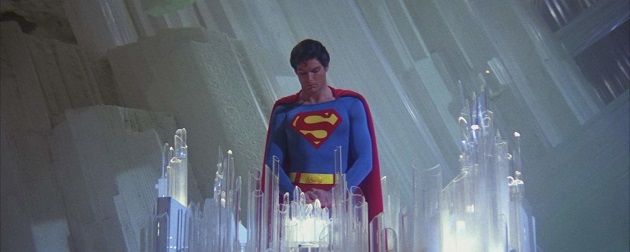What Is The Story With That Cellophane S?
***This Review Contains Spoilers***
Due to the complex and troubled production behind Superman II it seems likely it would have been destined to become a disaster of a film with the switching of directors from Richard Donner to Richard Lester during the principal photography process. However, instead of turning into a Frankensteinian mess of two director’s visions stitched together into one, I consider Superman II to be the perfect Superman film. A film which improves on the original in so many ways and delivers a more emotionally satisfying film and offering two hours of pure escapist bliss. A rare instance of the perfect combination of cast and crew coming together to create something wonderful. I will also take this opportunity to say: Lester cut > Donner cut (yes, this is a hill I am willing to die on). After watching Superman II: The Richard Donner Cut I thought to myself “Thank God Donner was fired from this production and replaced with Richard Lester”. Within the Donner cut, the romance between Lois and Clark is very forced and underdeveloped; there is a lack of humour, and no exaggeration, one of the absolute worst endings I’ve ever seen – but that’s for another review.

Lester’s style for Superman II forsakes the more epic scope Richard Donner employed for the first film, instead opting for scenes in the film to more resemble the frames of a comic book – Superman II does have more of a comic book/pop-art vibe. Lester brought on cinematographer Robert Paynter for the film to evoke the colour scheme of the comics however the contrast between Lester’s new footage and that shot by Donner which still made it into the film (i.e. all of Gene Hackman’s scenes) isn’t great enough to become distracting. Superman II has a much more brisk pace than the first film, as evident by the opening scene which re-edits the Kryptonian council’s trial of Zod, Ursa and Non to that of a more frantic pace. It does create a continuity issue with the first film as Marlon Brando has been completely removed from the scene (and is absent for the entire film), however, I am able to look past this as the opening is just so darn exciting and perfectly establishes the tone for the rest of the film. With all the setting up done in the first film, Superman II is able to get straight into the thick of it with the action sequence involving terrorists at the Eiffel Tower, and creating high stakes right off the bat. Correspondingly, another individual who doesn’t return for Superman II is that of composer John Williams and thus is lacking the sounds of The London Symphony Orchestra. Rather the film is scored with a smaller orchestra led by composer Ken Throne, however, I actually don’t mind the stripped-down approach to the music and find it does work in its own way. John Williams may have written the iconic Superman theme, but I find Ken Throne’s faster rendition for the opening credits of Superman II to be the best version of the famous theme with its quicker tempo. Likewise, someone in the production must have been fond of the Average White Band song Pick Up The Pieces as not only does it appear in the film, there is a neat orchestral version of it during the second dinner scene.

While their appearance in Superman: The Movie was fleeting, Superman II finally gives us General Zod (Terrence Stamp) and his two accomplices Ursa (Sarah Douglas) and Non (Jack O’Halloran) in all their glory. Terrence Stamp as Zod is one of those performances which bring me eternal levels of respect for an actor. Every one of his beautiful hammed-up, menacing lines I could listen to all day (a posh English accent makes any on-screen villain all the more evil). Alongside Stamp’s scenery-chewing, part of what makes the trio so intriguing is the innocence of their evil. The three don’t actually seem to be unaware of the immorality of their actions, with Ursa, in particular, taking great joy in her evil misdeeds (one of the many international TV cuts of Superman II does feature a scene in which Non kills a child off-screen, although I prefer this scene’s non-inclusion in the theatrical cut as it is too dark in tone with the rest of the film). Likewise, I greatly enjoy the trio’s genuine curiosity during their time on Earth, such as when Zod is genuinely baffled by Lex Luthor’s impudence (“Why do you say this to me when you know I will kill you for it?”). Much humour is devised from this 3rd Rock From the Sun-type humour such when the trio mistake Earth’s name as planet Houston, nor would any comical/semi-comical act be complete without the dumb one, as even the Kryptonian Council denounces Non for his lack of intelligence (ouch!).

As Zod, Ursa and Non have the same strength as Superman when on Earth, their characters do harken back to the original predecessor story to Superman, Jerry Siegel and Joe Shuster’s short story The Reign Of The Superman from 1933, in which an indestructible “superman” imposes tyranny on the world rather than using his powers for good. However, once Zod becomes supreme leader of Earth in Superman II, he doesn’t actually do anything. He, Ursa and Non just lounge around the Oval Office and don’t do anything while the rest of the world continues as normal. As I argued in my review of Superman: The Movie, Zod was correct to stand up to the authoritarian dystopia that was Krypton, and on Earth, he is the libertarian hero we need. I for one welcome our new Kryptonian overlords (#ZodWasRight). It is also worth noting that in the TV cut of Superman II, during the invasion of The White House, Zod takes particular umbrage at a portrait of Richard Nixon and starts frantically shooting it even though he should have no knowledge of who this man is, I guess it just rubbed him the wrong way.

Although I may put my defence of Zod on hold in favour of the film’s grand action set-piece as the son of Jor-El takes on the Kryptonian trio in a climatic fight which spawns the city of Metropolis. As combat with a villain was absent in the first film, this fight more than satisfies that desire (”Man, this is gonna be good”), with all those wonderfully kitschy special effects on display just getting better with age. The fight also includes multiple humorous uses of product placement as Superman gets thrown onto a Marlboro Cigarettes truck followed by Zod being flung into a Coca-Cola sign only a few seconds later to my great amusement. The inclusion of product placement for Marlboro Cigarettes is odd though considering early in the film there is some very subtle humour coming from Lois Lane speaking about how she is trying to stay healthy her via her intake of orange juice, all while she continues to chain smoke.

As with the first film, the scenes in The Daily Planet have that screwball comedy vibe, however, I feel the dialogue in Superman II is even wittier this time around. The recurring players in all the Christopher Reeve-era Superman films have such a great dynamic together that even in a movie as poor as Superman IV I can still enjoy their interactions. The major cast member absence of Superman II is Marlon Brando, however Susannah York as Superman/Kal-El’s mother does an effective job filling Brando’s shoes as she is commanding and stoic and like Brando, is a comforting presence in The Fortress Of Solitude. Moreover, Superman II offers further insights into the character of Lex Luthor with his desire just to be the ruler of Australia (and then later Cuba). He may be an egomaniac, but at least knows his limits; he can’t have the world but can happily make do with a continent. The TV cut of Superman II also interestingly features an interaction between Luthor and Jimmy Olson (Marc McClure), two characters that otherwise never encounter nor interact with each other at any other point in the series. I also adore how Superman refuses to look Luthor in the eye when speaking to him as he is that unamused by Luthor’s antics (probably in part since Hackman still got billed above Reeve in the opening credits). Other memorable characters from Superman II include Rocky (aka Mr Wonderful), the perfectly executed love-to-hate character, not to mention that kid from the redneck town who for some bizarre reason sounds like he’s from Victorian-era London.

The other aspect which makes Superman II so great is the romance between Lois and Clark. I was left so badly wanted to see these two get together, two down-to-earth souls who are too perfect a match for each other. Their interactions at the beginning of the film are so endearing as Lois almost mothers the clumsy and meek Clark, not to mention you can really feel the pain as Clark gets friend-zoned big time. Following Lois’ discovery that Clark is indeed Superman, Clark surrenders his powers as Superman to live as a mortal in order to be with Lois. This is followed by the two of them going all the way which I assume Clark would be unable to do as Superman as his superhuman strength would literally kill her (so am I to assume Superman gave up his powers just because he was that thirsty?). The crescendo to the Lois & Clark romance comes to ahead with easily the most emotionally powerful moment in the series, as following the restoration of Superman’s powers, the two try to comprehend continuing to professionally work together in the same vicinity despite their feelings for each other. Margot Kidder’s voice is so emotive and she has that Margaret Sullavan-like quality to her (at the film’s most intense romantic moments her tearful pleas kill me). This conflict is resolved by Clark giving Lois a memory-erasing kiss (another addition to the list of bizarre powers Superman uses once and never again alongside going back in time, repairing the Great Wall Of China with his laser eyes and the infamous cellophane S from earlier in the film). A conclusion like this could easily have come off as a cop-out but I will argue in its favour. Firstly, the manner in which he erases Lois’s mind is via the romantic gesture of a kiss is tonally consistent with the scene, and secondly, the sacrifice that is endured on the part of Clark. Lois can have her mind erased to forget the pain, but Clark is not offered that privilege, he must continue to remain stoic to carry the heartache. That said, with the status quo returned, another Superman adventure beckons, to which the beginning of the end credits to Superman II offers the viewer a tease:
Coming soon
“Superman III”
